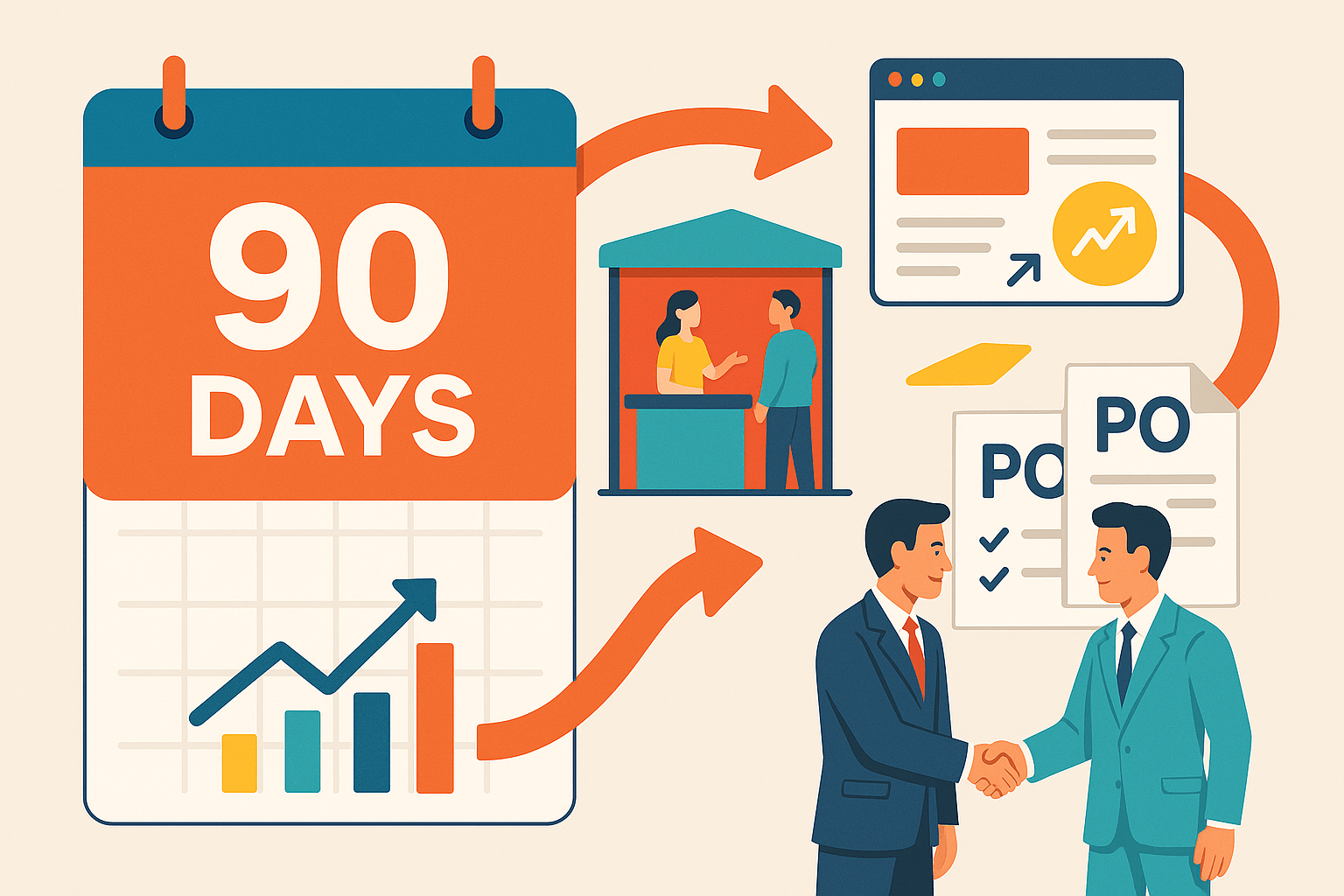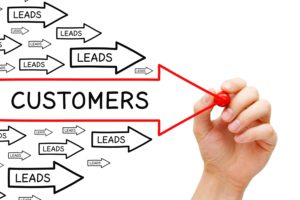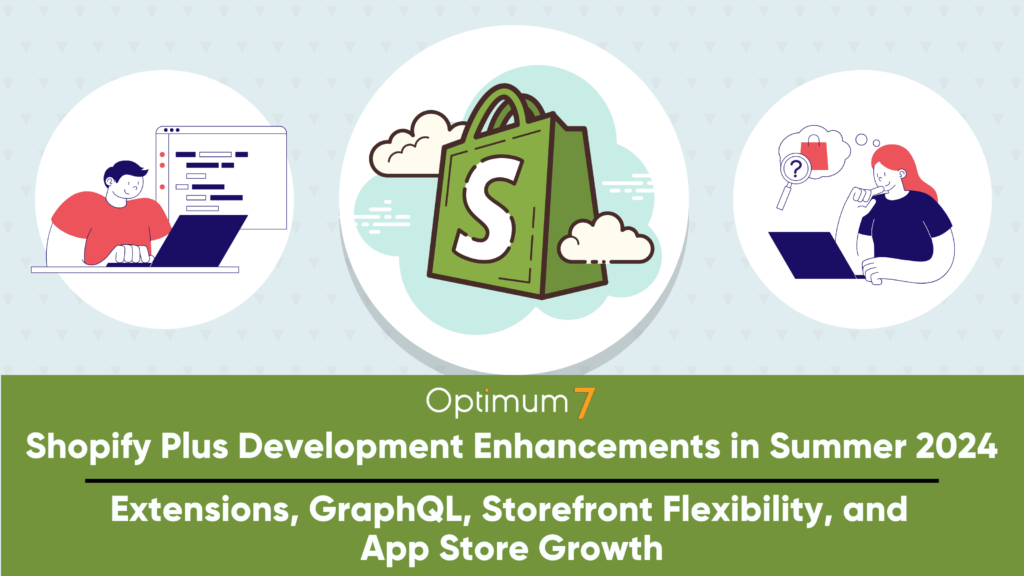The Real Problem: Your Buying Cycle Isn’t Long — It’s Blind
It’s May 2025. If you’re still blaming an “11-month sales cycle” for missed forecasts, you’re already behind. It’s not that buyers aren’t interested. It’s not that they need more nurturing. It’s that your systems can’t see them, not until it’s too late.
You go to MODEX or IMTS. Your booth has foot traffic. You spend six figures on setup, flights, lead scanners, and marketing collateral. Hundreds of engineering managers, plant operators, and buyers swing by. You scan their badges, get a few nods, and shake a few hands.
Then what?
Back at the office, your sales team uploads the leads into a CRM. The emails go cold. Three weeks later, one of those same prospects spends 18 minutes on your product detail page at 10:43 p.m. on a Tuesday. They dig through CAD diagrams. They forward a page to their procurement lead. They click to download a spec sheet.
You never know. Because your site can’t see it, your CRM can’t capture it. Your sales team never gets the signal.
And that’s the root of the problem. The buying cycle isn’t 11 months long because people love dragging their feet. It’s 11 months long because B2B buyers operate in stealth mode for 90% of the journey. “Your sales funnel isn’t leaking leads — it’s starving for visibility into buying intent and lead tracking behavior.
Most industrial marketing teams are already investing in SEO, paid media, and email to create those 35+ touchpoints the modern sales cycle demands. These marketing efforts often include robust reporting, website analytics, and customer relationship management platforms — but they fail without the visibility to track leads effectively. But without signal visibility, those efforts never translate into a pipeline. This deeper guide on industrial B2B marketing in 2025 covers how companies are evolving their content and channel mix, but in this article, we’re focusing on how to turn that engagement into a closed PO.
Without modern ABM site intelligence and effective lead tracking tools, your site just watches prospects come and go in silence.
The CMO is looking at paid media dashboards and asking why traffic is up but conversions are flat. The CRO is wondering why sales reps have no active pipeline. And the CEO? They’re sitting in board meetings defending a year of stagnant growth to investors.
The disconnect isn’t between marketing and sales. It’s between buyer activity and system awareness.
In 2025, a B2B buyer doesn’t fill out your contact form. They fill up your heatmap.
They hit 4 product pages. They scroll 78%. They click into your certifications. They open your “About” page to check if you’re ISO 9001 certified. Then they bounce.
If you’re not running site intelligence, that entire sequence gets logged as anonymous.
That’s the game now. You either surface those signals — and build your deal cycle around them — or you keep chasing ghosts with SDR sequences written in 2019.
This guide is your operating manual for the new buying cycle. We’re going to show you how to compress that silent 8-month stretch into a 90-day sequence that starts with awareness, flows through multi-role engagement, and ends in a closed PO.
What the Buyer Is Doing in Those 90 Days
If you think the buyer is “thinking about it,” you’re wrong.
In B2B, especially in industrial and manufacturing sectors, your prospect is doing real work during those 90 days. You just don’t see it unless you have the tools to look.
Let’s break it down.
Week 1: They Google a spec. Not your brand. A part number, a material requirement, or a keyword like “food-grade centrifugal pump NSF stainless.” They hit your site through a long-tail organic result—maybe a blog post you wrote two years ago. They’re not filling out a form. They’re verifying that your offering meets their project’s baseline requirements.
Week 2: An engineer from the same company checks your product detail page three times. Not once. Three times. He sends it to a colleague. You don’t know that yet. They’re clicking through technical documents, compatibility charts, and CAD drawings. Not to be polite—because they’re checking for friction. Will your product integrate with their existing system without a spec rewrite?
Week 3: Now, procurement gets looped in. But not via email. They Google your pricing model. They look at your distributors. They search “ pricing pdf” and land on a buried resource page. They look at the warranty. They don’t call. They don’t chat. But they read.
Week 4–6: Nothing. No contact. No signups. But traffic continues—five, seven, nine sessions. Two different IP addresses. They hover over your About page. They scan customer logos. They pull a datasheet and forward it.
They’re not evaluating vendors — they’re filtering potential customers through digital lead behavior and intent signals that most companies still fail to track.
By Week 7: The committee is nearly aligned. You’ve made it to the final three. You don’t know that. But they’ve already dismissed two others based on lead time and responsiveness. Someone in purchasing finally picks up the phone, but they’re not asking for a demo. They want a quote.
And here’s the punchline: this happens with or without your awareness. If your systems don’t surface this motion, your sales team shows up flat-footed. No context. No preparation. Just a random “quote request” that drops like a meteor. And if your reps fumble it? You’re done.
The 90-day window is your shot. But it’s not a sales cycle. It’s an invisible buyer journey. Engineers, ops managers, and procurement leads move in and out of research mode asynchronously, and most of your tech stack still treats it like a linear funnel.
By the time you send your first outreach email, the deal’s already been scoped, budgeted, and half-decided. Your job isn’t to chase the decision. It’s to see it forming.
That’s why the next step isn’t just outreach. It’s signal detection.
To understand the real customer journey, you need tools that track leads based on behavior — not just form fills. Effective lead tracking requires capturing data points across the full funnel stage — from early website visits to download behavior — enabling your team to qualify prospects based on real buying intent.
Step 1 – Deploy Site Intelligence to Surface Buying Motion
Let’s make this simple: If your site can’t tell you which companies are researching you and what products they’re researching, that means you’re not running a sales system. You’re gambling.
Every industrial site already gets “deal signals.” They’re just invisible. Four buyers from Honeywell visit your stainless steel component pages. An engineer from Boeing hits your specification PDF three times in 48 hours. A procurement lead from Siemens returns to your request-a-quote page at 11:30 p.m. on a Saturday.
You have the traffic. You just don’t have the signal layer.
Site intelligence fixes that. By resolving anonymous traffic into company-level insight, this process transforms raw activity into actionable insights your sales leaders can use — without wasting time chasing unqualified traffic.
This isn’t some fantasy tech stack. It’s a real-time lead tracking process that bridges your marketing and sales teams by capturing intent signals, scoring qualified leads, and syncing behavior to your CRM platform — powered by machine learning models that recognize behavioral patterns and surface buying intent automatically. In May 2025, ABM site intelligence is now a must-have layer between anonymous traffic and revenue-qualified motion, giving you real-time access to buyer intent data across engineering, operations, and procurement. It turns unknown visitors into company-level signals. It ties SKU-level interest to account names. And it gives your sales team a 3-week head start—before the RFP ever gets written.
Here’s how it works:
- A visitor lands on your site. You don’t need them to fill out a form. Site intelligence resolves their IP or network behavior to a company ID.
- You see that five different visitors from “Lockheed Martin” hit your chemical pump detail pages across two product lines, one of them on mobile.
- The system tags that account as “warm” create a session summary (SKUs viewed, PDFs downloaded, total session time), and trigger an internal signal.
- You now have intent. Not an MQL. Not a bounce. Intent.
This is the layer that B2B has been missing. Everyone talks about “first-party data” like it’s just email and form fills. It’s not. It’s behavior. Buyer psychology. Unspoken research patterns that show up long before a quote request hits your inbox.
Site intelligence lets you see the decision committee before they show their faces.
And once you see them, you can act: LinkedIn voice notes to the engineer. Klaviyo nurture to the operations lead. Product-specific retargeting to procurement. All before they ever raise their hand.
This is how you compress a bloated, ghost-heavy 11-month cycle into a lean, signal-driven 90-day window.
You want shorter sales cycles? Start by seeing the buyers you already have.
We deploy Site Intelligence in 48 hours. You get 30 days of buyer-reveal data free. No forms. Just visibility. Contact us and see what we can do.
Step 2 – ABM Cadence That Meets the Buyer Where They Are
Let’s kill the myth now: the B2B buyer is not a single person. It’s a group. A committee. Four to eight people spread across engineering, operations, and procurement, each one with different questions, different incentives, and different tolerances for risk. Your marketing team isn’t just launching a new email campaign or rolling out a new marketing campaign. They’re enabling sales reps to move with precision — delivering relevant messaging that improves conversion rates and drives customer success.
If you’re still sending a single follow-up email and hoping it “nurtures the deal,” you’re not selling. You’re shouting into a silo.
This is why generic email blasts and untargeted LinkedIn ads don’t convert. They speak to nobody. Or worse—they speak to the wrong person, at the wrong time, about the wrong thing.
Here’s the shift: your job isn’t just to sell to the committee. Your job is to sequence them.
That means identifying which role is active in the cycle, which signals they’re showing, and which touchpoint earns attention, not irritation.
We build full-funnel ABM cadences around three buying roles:
- The Engineer (specifier)
- The Ops Lead (user/approver)
- The Procurement Officer (budget/purchasing gatekeeper)
And we target each one differently, using real-time behavior.
Let’s walk through a working cadence across 90 days:
Week 1:
- The engineer from Dow hits 3 product detail pages. Spends 6 minutes. View a CAD file.
- We trigger a LinkedIn connection request with a 7-second voice note: “Saw you checking out our corrosion-resistant fluid systems. If you need spec clarifications, I’m happy to walk you through what most teams miss.”
- Simultaneously, Klaviyo begins an ops-facing nurture sequence built around use case videos and install walkthroughs.
Week 2–3:
- Multiple visits from the same company, now from a mobile device and a different subnet—likely procurement or a field lead.
- Retarget with a comparison-table landing page built specifically for commodity buyers. Show lead times, warranty, and bulk discount logic.
Week 4–5:
- Site intelligence shows no return traffic, but the last visit included a PDF download and calculator tool use.
- That triggers an internal sales alert: “Buying committee likely in consideration phase. No pricing page hit. Nudge ops.”
- Sales sends a 2-line email: “Your team dug into our 2200 series last week. We’ve got a quick breakdown one-pager on install costs vs. . Want me to send it over?”
Week 6–8:
- Procurement finally hits the quote page.
- Now we personalize the nurture: custom landing page with only their relevant product line, case study for their industry, pre-loaded spec files, and optional book-a-call CTA.
Week 9–12:
- Committee alignment is likely reached. Final questions, risk checks, or negotiation begins.
- Sales loops in solutions engineer, preps proposal, and includes win data on similar accounts.
This isn’t overkill. It’s table stakes.
And none of it works without alignment. Marketing can’t just “run campaigns” anymore. They run signals. Sales can’t just “follow up” anymore. They close based on motion.
You compress the cycle by replacing guesswork with precision.
And every touchpoint either compounds trust or loses the room.
Most brands lose because they send the same message to all roles. Wrong voice. Wrong format. Wrong timing.
You don’t need more automation. You need intent-based sequencing—built on actual behavior, segmented by role, and optimized for deal velocity.
Step 3 – Trade Show Traffic Recycled Into Pipeline
Let’s talk about the biggest lie in B2B events: “We had a great show.”
What that usually means is: “We scanned 300 badges, got 18 business cards, and 6 people said they might reach out.” Two weeks later? Zero pipeline. The stack of leads is aging quietly in your CRM while your sales team moves on to newer, hotter prospects.
Here’s the brutal truth: 90% of trade show leads die in your post-event spreadsheet.
It’s not because the buyers weren’t interested. It’s because your follow-up system isn’t built to recognize or respond to their behavior after the show.
Trade shows aren’t the end of a buying cycle. They’re the ignition point. But if you don’t connect both engagement to site intelligence and ABM sequencing, you’re throwing away heat.
Here’s how we fix that systematically:
1-Sync Badge Scans to Your ABM Platform Immediately
Whether it’s via a lead retrieval app, HubSpot integration, or a Google Sheet, every badge scan should become a trackable account. Tag them by product line or booth conversation (even loosely). This gives your system something to listen for.
2-Watch for Return Visits Post-Show
In the 2–4 weeks after a trade show, the real signals happen. A prospect visits your website at 10 p.m. from the same company they represented at the booth. They dig through spec sheets or check a product detail page that matches what you discussed. Site intelligence sees that. Your CRM? It doesn’t.
3-Trigger Smart Follow-Up That Doesn’t Feel Like “Just Following Up”
Instead of a generic “Great to meet you at the show!” email, your follow-up should reference product behavior:
“We saw someone from your team checking out the XYZ rotary filter specs this week — probably tied to what we discussed at MODEX. Want us to send you a full comparison chart?”
That email lands. Because it’s relevant, contextual, and buyer-aware.
4-Re-engage Booth Visitors via Targeted Retargeting
Take your booth visitor list, create a custom audience, and retarget them with:
- Product-specific explainer videos
- Quote calculator tools
- Comparison table landing pages
All were segmented by the prototype line they engaged with at the event.
This isn’t “spray and pray” post-show marketing. It’s a lead resurrection with surgical targeting.
And when done right? You don’t just see higher open rates—you see meetings. Because now, your prospects feel like you remembered them, understood their problem, and anticipated their next step.
The trade show isn’t where the deal starts. It’s where the system kicks in.
Step 4 – Sales Lead Tracking & Activation with Signal, Not Guesswork
Your rep opens the CRM. There’s a “lead” from Rockwell Automation. No context. Just a name, a half-filled email, and a timestamp. What do they do?
Call? Email? Hope?
Let’s be honest — most sales outreach in industrial B2B still runs on guesswork. Reps chase names, not motion. But names don’t close deals. Intent does.
In 2025, sales don’t need more leads. They need clarity — signal, not noise. They need to know which account is actually in motion, what product they’re circling, and which role is active in the process.
This is how modern B2B sales gets activated:
1-Deliver Account Heatmaps, Not CSVs
Stop sending your reps contact dumps. Start giving them behavior maps:
- “Four sessions from Siemens in the past 7 days”
- “3 visits to stainless pump detail pages”
- “Downloaded NSF-compliant spec sheet on Friday at 11:22pm”
Now they know where to aim, how warm the account is, and who likely initiated it.
2-Trigger Rep Alerts Based on Product Line Engagement
Don’t make reps guess which SKU the buyer cares about. If an engineer from BASF lands on your 2200 series three times in a week, your system should flag it. “This account is heating up around Product Line B — time to step in.”
3-Equip Reps with What to Say — Based on Signal
Here’s the difference between cold outreach and activated outreach:
Cold:
“Just checking in to see if you’re working on any new projects…”
Signal-based:
“Looks like your engineering team was deep in our NSF-certified pump specs last week. We just built a new install kit that cuts lead time by 22%. Want to see how it maps to your line?”
That message lands. Because it speaks directly to the buyer’s unspoken activity. It creates continuity — not interruption.
4-Prioritize Accounts with Cross-Role Motion
If multiple people from the same company are visiting your site — an engineer, a procurement IP, and a mobile device from ops — that’s not a coincidence. That’s deal velocity.
Your system should surface those multi-role intent spikes and flag them as ready for sales entry.
When sales enters the conversation late, they have to ask permission. When they enter early, with a signal, they lead the narrative.
The goal isn’t to chase buyers. It’s to catch them in motion.
That’s how you shift from “outbound chaos” to “inbound orchestration.”
And that’s how you move from no-shows to signed POs — without burning six months chasing ghosts.
From Ghost to PO: What the Full 90-Day System Looks Like
Let’s put it all together.
A buyer hits your site anonymously. An engineer, mid-spec cycle, looking for answers you didn’t know they needed. In the old playbook, they’d vanish—maybe return, maybe not. Maybe you’d catch them with a cold email eight months later. Maybe you wouldn’t.
But now?
They land on your site. Site intelligence resolves the company. Their session behavior triggers a warm signal—product pages visited, SKUs hovered, and documents downloaded.
That signal flows into your ABM cadence. LinkedIn voice notes hit engineering. Ops gets a Klaviyo nurture sequence with install videos. Procurement sees retargeted case studies showing ROI by application.
Your reps don’t guess. They get alerts. They step in with precision — because your industrial lead tracking system maps motion, not just names. Not “just following up” — but leading the conversation based on what the buying committee is actually doing.
The cycle shrinks. Visibility increases. Momentum builds. The quote lands earlier. The PO follows faster.
What used to take 11 months now takes 90 days.
Not because buyers changed. But because you did.
Motion gets surfaced with site intelligence, but it gets converted through alignment. If your email flows aren’t segmented by persona and lifecycle stage, you’re not nurturing. You’re delaying. This Klaviyo segmentation guide shows how to map your workflows to the real industrial buying group.
This is the system. Not a tool. Not a campaign. A new operating rhythm for modern B2B selling, built on signal, powered by timing, and structured for real buyer behavior.
Now let’s wrap with the call to action.
Book Your Site Intelligence Pilot — 30 Days of Buyer-Reveal Data
You don’t need to overhaul your entire sales motion to win faster. You just need to see what’s already happening.
Your site is getting traffic right now — engineers, plant managers, and procurement officers quietly researching your products. They’re clicking SKUs. Downloading spec sheets. Evaluating your fit.
If you can’t see that, you can’t close it.
That’s what our Site Intelligence Pilot delivers.
- We’ll deploy buyer-reveal tracking in 48 hours
- You’ll get 30 days of real-time visitor intelligence: who’s on your site, what they’re researching, how often they come back
- You’ll know which companies are actively spec’ing your products — even if they never fill out a form
This is the missing layer between your marketing funnel and your sales pipeline. It turns anonymous interest into visible, trackable motion — and gives your sales team a 3-week head start on every deal.
No assumptions. No guesswork. Just data that closes deals.
And it’s not just data — it’s the crucial information your marketing and sales teams need to spot sales opportunities and qualify leads before your competitors do.
Book your Site Intelligence Pilot now.
Let’s shorten the cycle. Let’s turn traffic into the pipeline.
Let’s close the PO.
The 90-Day Deal Cycle Toolkit
In industrial B2B, your biggest deals don’t start with a contact form. They start with an anonymous spec sheet download, a 2-minute product page scroll at 10:43pm, and a silent pricing page view from procurement.
This toolkit gives you everything you need to surface that behavior, activate sales with signal—not guesswork—and compress your sales cycle from 11 months to 90 days.
Most companies waste time chasing cold contacts. This toolkit ensures your marketing efforts capture leads early, track behavior across data points, and inform your sales strategy in real time.
Use it internally, or hand it to your CMO, CRO, or RevOps lead. This is your system blueprint.
1. Account-Based Engagement Heatmap
Track the real-world motion of buying groups across your website—before they fill out a form.
| Account | Role Detected | Sessions | Key Pages Hit | Signal Strength | Action Triggered |
| Lockheed Martin | Engineering (Desktop) | 3 | CAD Viewer, Pump Spec Sheet | High | LinkedIn voice note sent |
| Siemens | Procurement (Mobile) | 2 | Pricing PDF, Warranty Page | Medium | Retargeting triggered |
| Dow Chemical | Ops (Tablet) | 1 | About Page, Installation Guide | Low | Klaviyo nurture started |
Tip: Customize these by segment or SKU. This becomes your real-time signal map—not a CRM contact list.
2. Site Intelligence Readiness Checklist
If you’re not capturing anonymous buyer motion, you’re flying blind. Use this checklist to assess readiness:
Must-Have:
☐ Can resolve IP/org-level traffic
☐ Maps session behavior to product categories or SKUs
☐ Triggers alerts to sales team based on page depth, role signal, and revisit timing
☐ Integrates with your CRM or ABM platform (HubSpot, Salesforce, Apollo)
☐ Filters out noise (job seekers, competitors, resellers)
Optional but Powerful:
☐ Cross-device session stitching
☐ Scoring logic by product line
☐ API sync with Klaviyo or marketing automation
☐ Automatic session-to-contact resolution for trade show leads
3. ABM Sequencing Map by Buyer Role
One-size-fits-all email blasts are dead. Here’s how to sequence each buyer within the 90-day cycle:
| Role | Signal Behavior | Outreach Format | Messaging Angle |
| Engineer | Spec sheet view, CAD click, long session | LinkedIn voice note + Video walkthrough | “Need help speccing this? Let me simplify.” |
| Operations | Pricing page scroll, warranty review | Klaviyo flow w/ install video | “Here’s what our clients avoid during install.” |
| Procurement | Distributor page hit, quote request | Email w/ one-click calculator | “We mapped cost savings vs. your current system.” |
Goal: Target the right person with the right message, based on what they’ve already done—not what you assume they want.
4. Trade Show Lead Resurrection Playbook
Your booth scanned 200+ badges. Here’s how to make sure you don’t lose 90% of them after the show:
Step 1: Sync scans to CRM or Google Sheet within 24 hours
Step 2: Tag each lead with product discussed or vertical
Step 3: Watch for revisits in the 2–4 week window post-show
Step 4: Trigger retargeting + signal-based email follow-up:
Email Template:
Subject: Following up on after MODEX
Body:
Saw someone from your team exploring our 2200 Series pump specs this week—likely tied to what we discussed at the booth. Want me to send over the side-by-side comparison chart?
Step 5: Create custom landing pages by product line discussed at the show. Include:
- Warranty breakdown
- Lead time calculator
- One-click CTA to request quote
5. Signal-Based Sales Activation Sheet
Replace cold outreach with activated outreach.
Instead of this:
“Just checking in to see if you’re still considering vendors…”
Send this:
“Saw your team dug into our corrosion-resistant stainless models last week. Most clients ask about flow compatibility at this stage—want me to send the install kit visual?”
Signals to Watch For:
- 2+ visits from same org in 48 hours
- Scroll depth > 60% on spec sheet
- Multiple roles detected (desktop, mobile, different subnets)
What to Trigger:
- In-platform alert to rep
- Warm outbound from assigned AE
- Invite to personalized quote builder
Real-World ROI Benchmarks from This System
Clients who’ve implemented the 90-Day Deal Cycle system:
- Increased conversion rates on quote pages by 27%
- Reduced deal velocity from 160 to 74 days
- Saw 5x higher post-trade show engagement
- Cut SDR workload by 40% by eliminating cold follow-ups
How to Use This Toolkit to Drive Marketing ROI
This toolkit maps the full 90-day deal cycle—but your activation starts with a 30-day Site Intelligence Pilot.
Here’s how to deploy the toolkit over the first 4 weeks to surface buyer signals, align your teams, and shorten your cycle from day one:
Week 1 – Visibility Audit
☐ Deploy site intelligence tracking (takes 48 hours)
☐ Identify top 5 accounts in motion (based on session activity)
☐ Map product page engagement to buyer roles
Week 2 – Activate Sales Motion
☐ Share warm account signals with AEs
☐ Send LinkedIn voice note or product-based outreach by role
☐ Begin nurture flow for Ops and Procurement
Week 3 – Trade Show Lead Recovery
☐ Upload booth leads and match against signal activity
☐ Trigger behavior-based follow-up emails (not generic check-ins)
☐ Retarget with product-specific landing pages
Week 4 – Measure Signal Impact
☐ Track quote requests tied to viewed SKUs or spec downloads
☐ Meet with sales to evaluate velocity + call quality
☐ Refine ABM sequence for active accounts
After 30 days, you’ll know exactly:
- Which accounts are in motion
- Which roles are engaging
- Which touchpoints are working
From there, you scale. You sequence. You close faster.
Want us to deploy this for you in 48 hours? Book your Site Intelligence Pilot and we’ll connect the dots—from traffic to closed deal.









